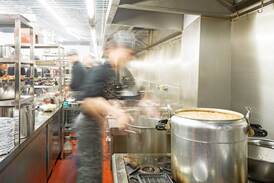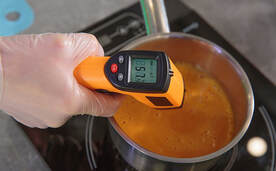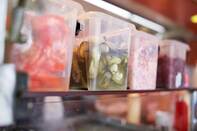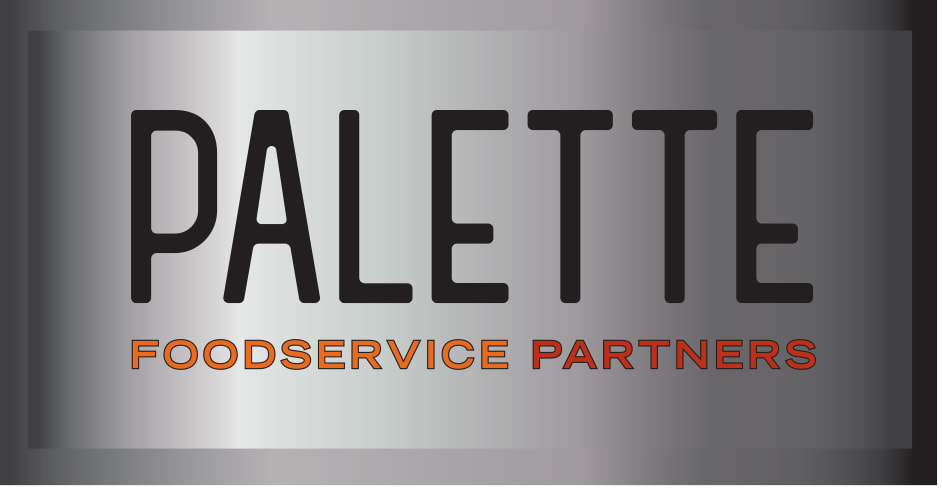 If your business is struggling with hiring and retaining staff, it may also be struggling to carry out food safety training – or to review any processes that don’t directly support your compliance with local and state regulations. But unfortunately, a restaurant may suffer for this in the long term if employees are injured on the job or if the business faces a steep insurance claim that could have been prevented by having a strong safety culture. Your restaurant’s commitment to safety should be so woven through its fabric that senior leaders talk about it regularly and every new hire is aware of your approach before they even start their job. To make it easier to share safety knowledge and encourage retention, automate what you can – through the use of video training, gamification and digital tools that guide staff through preparation tasks that protect safety. Then take steps to broaden the knowledge of your team through regular cross-training to help fill gaps. Give your more senior staff mentoring roles with newer staff. Above all, explain the why behind why you perform certain safety practices so that tasks are less likely to fall through the cracks as you manage the other demands of your business.  Enhance your risk management culture Taking a more proactive approach to risk management in your business can save you significant money and time in the long run – helping you avoid costly insurance claims, repeat safety inspections, business interruptions and other drains on resources that you’d rather direct to improving your overall operation. Could risk management be woven into your culture more tightly this year? It can help to look across your operation to assess risks as diverse as your potential for equipment problems, food safety concerns and cybersecurity vulnerabilities. Connect your risks to daily tasks that help you identify and respond to problems. Assess where staff training is needed to reinforce the actions your business needs to take to manage these issues day to day. Then make it possible to track these actions – by tying each task to a person on staff and using automated dashboards and checklists that make it easy to monitor when jobs are completed and missed. To manage evolving risks to cybersecurity, conduct regular testing with the help of your vendor, limit system access to key personnel, and ensure you’re using protections such as multifactor authentication and encryption as additional data safeguards.  When the food safety auditor Steritech analyzed more than 100,000 food safety assessments for quick-service, fast-casual and casual restaurants in the first seven months of this year, they uncovered some common safety challenges. Across the board, the top three restaurant violations relate to the cleanliness of nonfood-contact surfaces (like knobs, cooler handles and equipment surfaces), the condition of nonfood-contact surfaces (like cracked knife handles or rusty shelves), and general facility cleanliness (like residue on walls, ceilings and floors). Steritech says common industry challenges such as training gaps, labor shortages and budget limitations may be behind the findings. If you’ve been experiencing these challenges, review your schedule and cleaning routine to ensure these areas are being covered, and plan equipment repairs in advance to avoid injuries.  Keeping foods out of the temperature danger zone – between 40 and 140 degrees Fahrenheit – can be more difficult in the summer heat, particularly if you’re preparing and serving food outdoors. Your temperature logs can help keep your food safety on track, but the information they contain can also reveal problems. In an interview with Mashed, Chris Boyles of Steritech said when temperature logs show several blank spaces or list the same temperature for every item, they can indicate to a health inspector that the restaurant isn’t tracking food temperatures correctly. Using digital tools to automate these tasks can help you identify these problems promptly and avoid raising red flags with inspectors.  You’re hardly alone if you’re short on staff right now – a majority of restaurants are. But you don’t want to plant the seed with health inspectors that you are taking shortcuts with safety as a result. Does your restaurant show signs that it’s operating with a skeleton crew? That could include long waiting times before being greeted or served, as well as an abundance of tables waiting to be cleaned. If so, it may be time to review any time-wasting tasks throughout your operation. What items can be delegated to others or automated with the help of technology? What tasks are non-urgent and can be set aside so you can protect safety? Taking care of those items may help you ensure a guest returns – and assure an inspector that you’re not slipping up on safety.  The prospect of a health and safety inspection can cause anxiety for restaurant teams, but it doesn’t have to. In addition to your ongoing training efforts, zeroing in on different parts of your operation on a rotating basis can help you reduce the overwhelm of managing overall food safety while ensuring you’re not overlooking something important. As winter gets closer and the warmth and aromas from your kitchen call pests inside, consider double-checking your food storage practices. Confirm that all items are stored at least six inches off the floor and in proper containers that prevent contamination. Ensure containers are accurately labeled. Store any dangerous chemicals away from food or tools that come into contact with it. Check appliances and food contact surfaces to ensure they are in good condition and free from any food residues that can attract pests.  Food safety tasks can be among those restaurant responsibilities that you pay closest attention to when something has gone wrong – a customer gets sick or leaves a negative review about the cleanliness of your facility, or an inspector notes something in your operation that needs to get better. But to set your business on the strongest possible course and improve staff behaviors in a lasting way, it’s important to focus on the positive. A recent Harvard Business School study found that regardless of the industry, business teams performed best when there was a positive-to-negative comment ratio around 6-to-1. In your training, team meetings and one-on-one interactions with staff, do you have plenty of ways to praise what is going well – through contests, positive comments or simple thank-yous? This may be even more important than reminding staff of what they need to do to improve.  Would your staff know at what temperature food falls into the temperature danger zone? Could they explain how they ensure food that needs to be discarded is removed at the proper time? Chances are your staff roster has seen some drastic changes in recent months – and you may have had to compromise on the skillsets of the newer people you have hired. As you onboard new staff, it’s important for them to understand and be able to correctly answer questions about your food safety program. Make food safety education an ongoing part of your training and conduct surprise mock inspections on a regular basis so the official ones aren’t a challenge to pass (and don’t create the need for additional formal inspections throughout the year). Covid-era changes to restaurant dining can make it easy to overlook the many other aspects of food safety that a restaurant team must remember. Can you tap into tech to help your staff avoid information overload? Food Safety News suggests incorporating such measures as electronic checklists to prompt staff about procedures and instructions, automated prompts to help them avoid keeping food sitting out for too long, or alerts about issues that could become problems if not addressed quickly – like rising temperatures in a cooler. Finally, digitize any remaining paper-and-pencil processes in your business, like compliance checklists or records.
We’re all getting used to doing more tasks remotely lately – and your food safety audits may be heading in that direction if you aren’t already conducting them remotely. These audits tend to be conducted either via cameras installed onsite or via a handheld camera that employee uses to do a walk-through of your facility. Food Quality & Safety advises that you conduct employee training on how to present your facility professionally via video, and also manage the related risks carefully – particularly when it comes to data security and keeping sensitive business information safe.
|
subscribe to our newsletterArchives
April 2024
Categories
All
|





 RSS Feed
RSS Feed